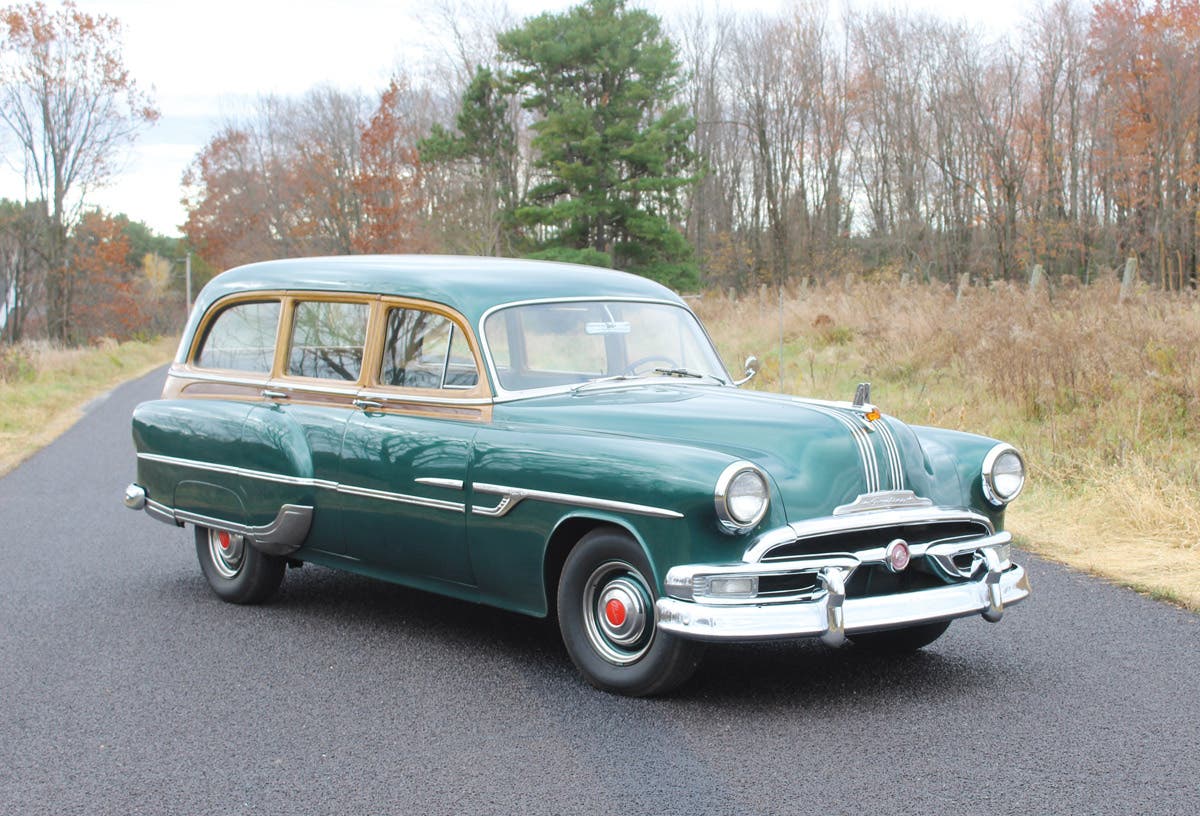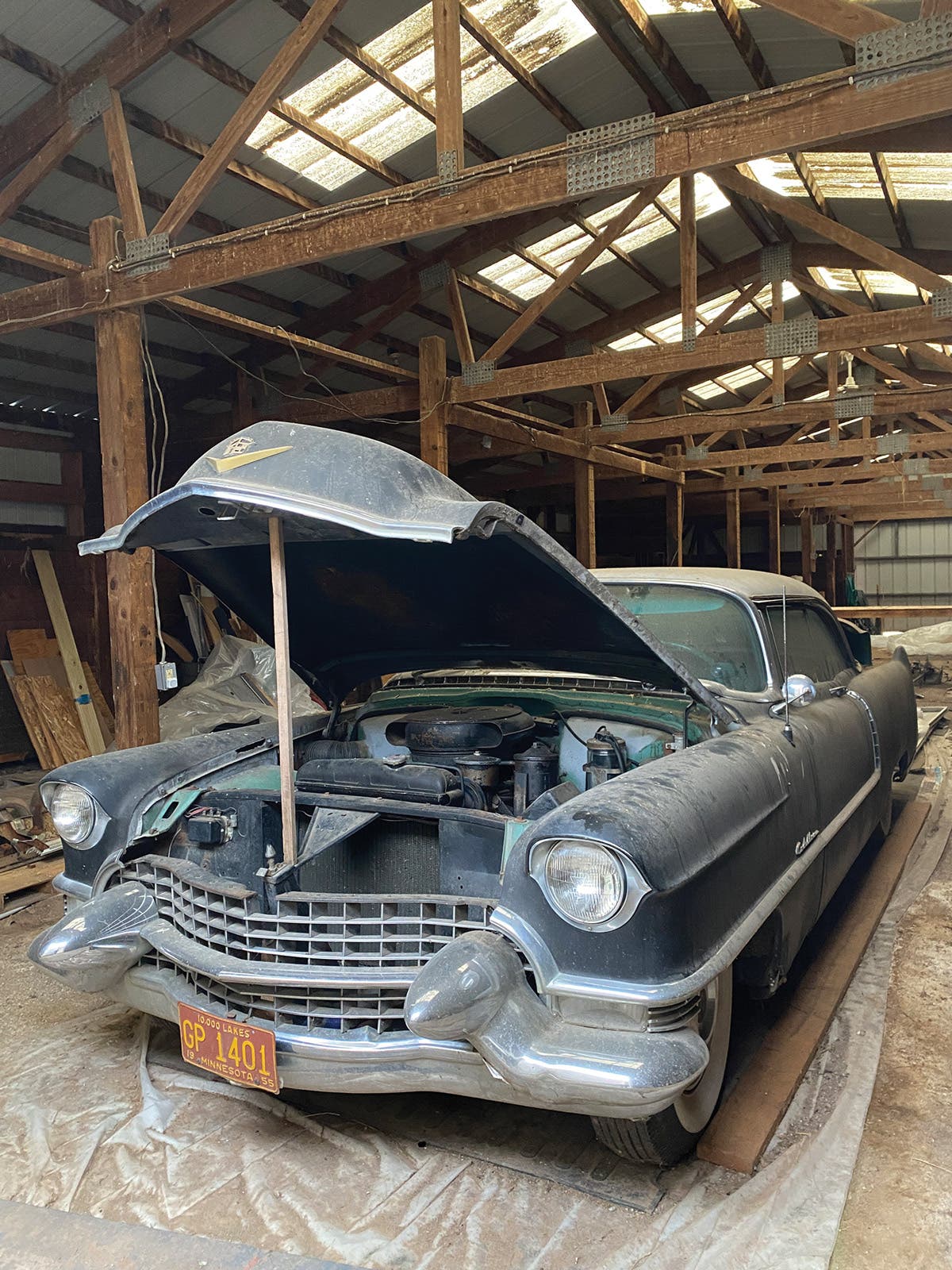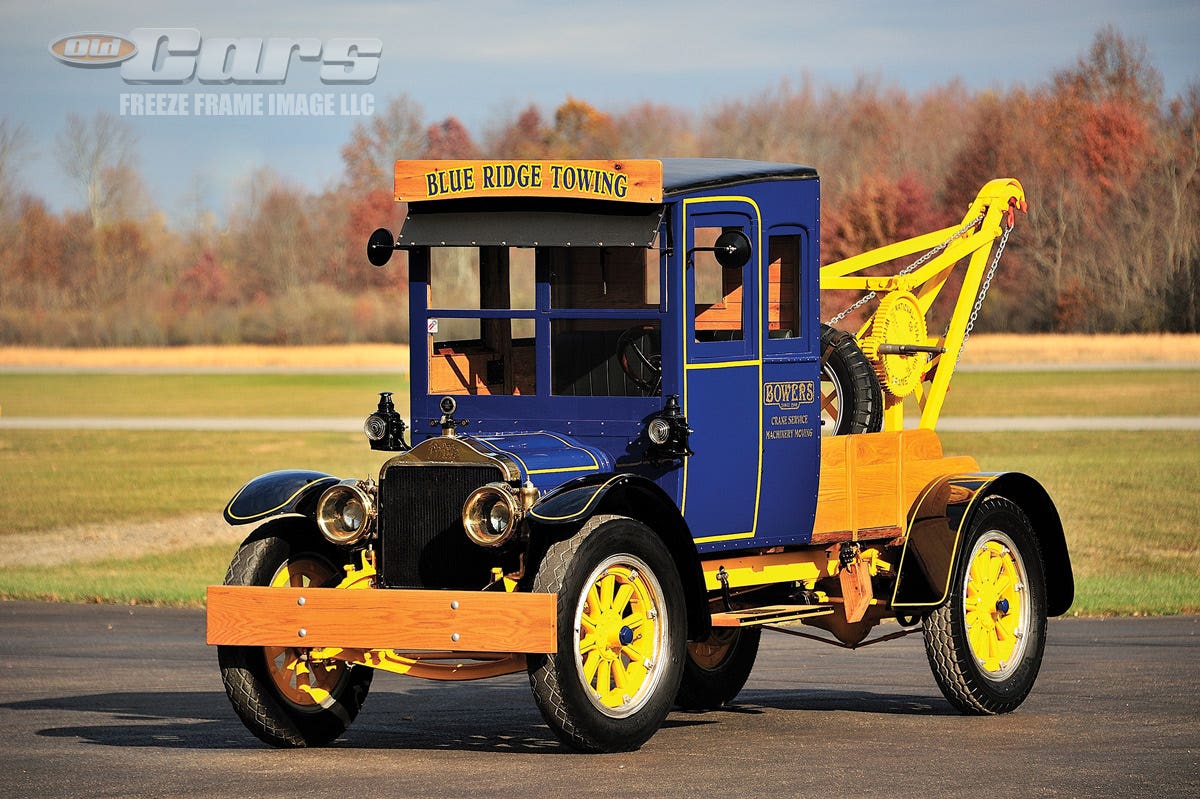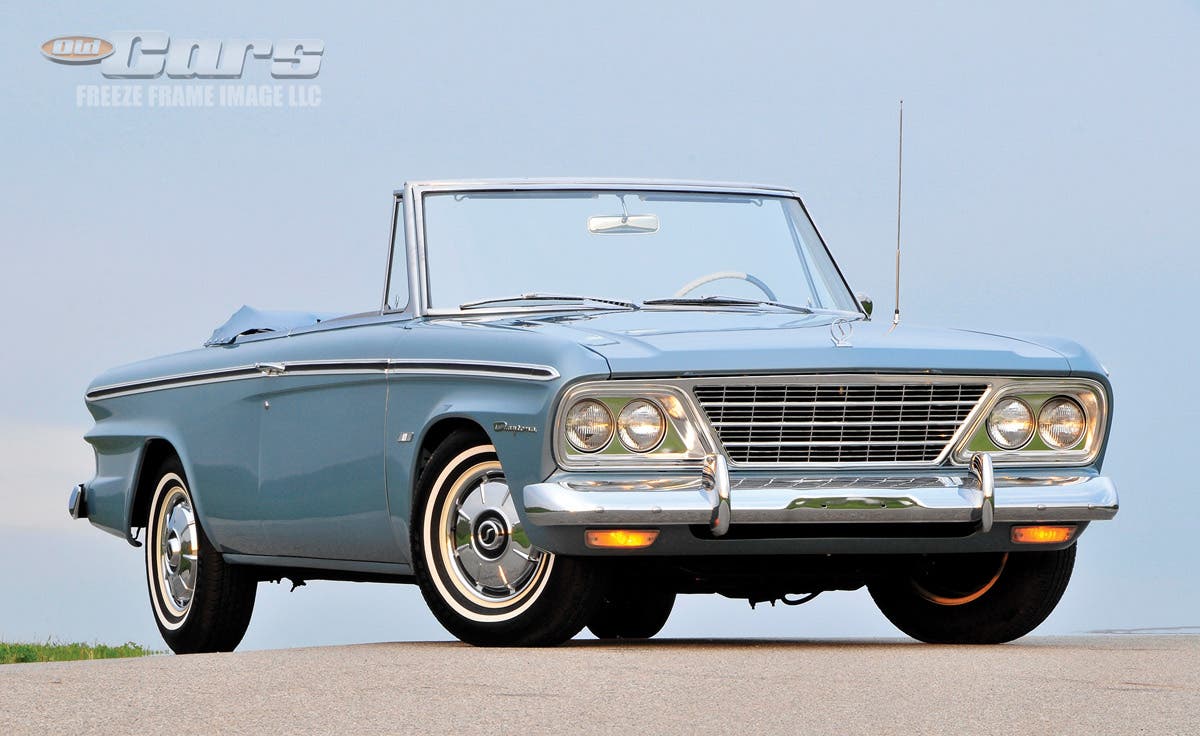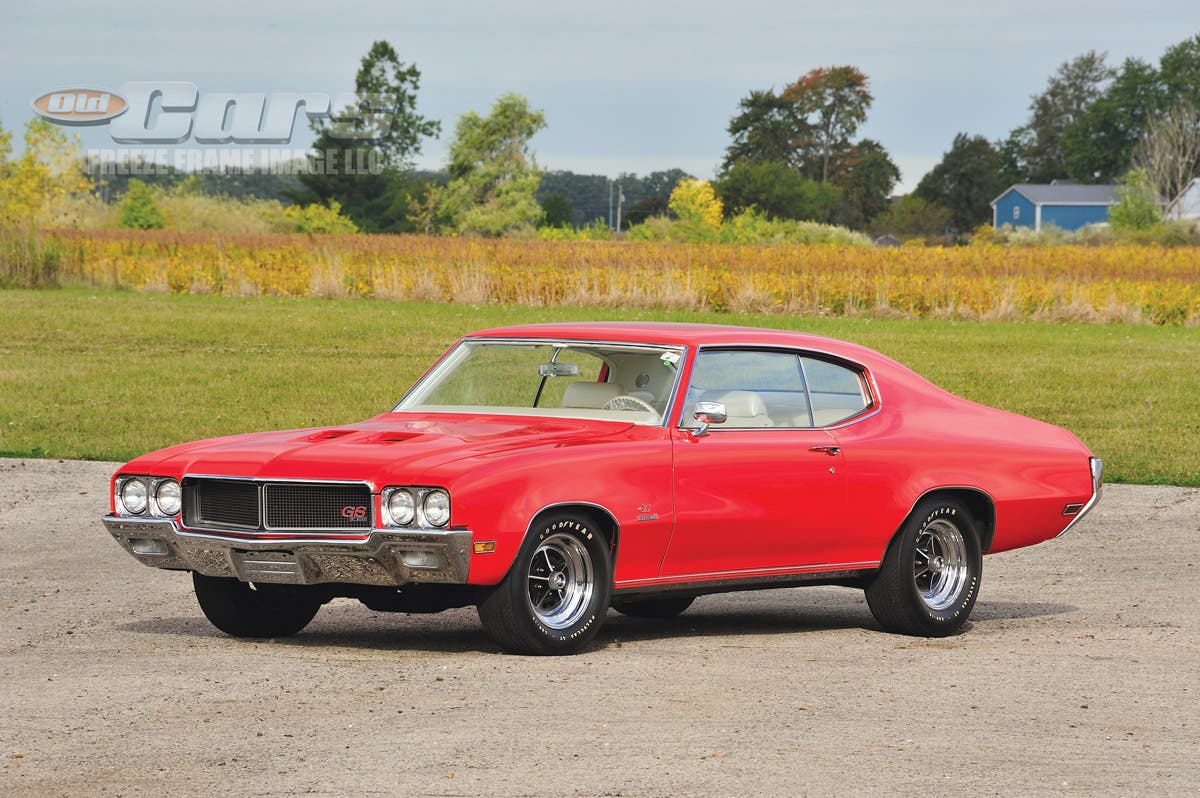1959 Ford station wagon has room to zoom
Mildly modified ’59 Ford Country Sedan still pulls its weight
John Slusar’s good-looking ’59 Ford Country Sedan is slightly customized with raked underpinnings for reliable road trips to hobby events pulling a vintage trailer.
Story and photos by John Gunnell
John Slusar bought his 1959 Ford station wagon about six years ago at the Minnesota Street Rod Association’s “Back to the 50’s” show in St. Paul.
“There was such a big crowd around it, that I knew I should take off the ‘for sale’ sign and own it,” says the Milwaukee-area collector. “I just told everybody it was sold!”
From the beginning, Ford’s 1959 models had a magnetism that lured people to them. Ford was a participant in the 1958 Brussels World’s Fair and launched its redesigned 1959 models at that venue. The “Altogether New” ’59 Fords were awarded a gold medal at the fair by the Comite Franscais de L’Elegance for the cars’ distinctiveness of style and beautiful proportions.
At a time when other automakers designed cars that looked capable of interstellar travel, Ford exercised great restraint. Its designers swept the rear fender lines to the rear of the car, formed a housing for the back-up lamps and curved the lower portion around an oversized tail lamp for a startling effect. Many Ford collectors today consider the 1959 Fords to be the most beautifully styled postwar Fords built. With elegance and understated class, the cars showed remarkably good taste resulting in good sales. Model-year production of 1959 Fords and Thunderbirds came to 1,462,140 units, and Fords alone accounted for 25 percent of the total auto industry output.
Slusar’s car is a mid-level Country Sedan. “It started out as a really nice original wagon that was actually built in Minneapolis, then spent most of its life in Nebraska,” Slusar discovered. “It then returned home where it was customized. The door handles and all emblems were shaved and the front end was lowered — lowered too far, in fact.”
The windows were tinted black and the car had a show-quality repaint from the beltline down. Incredibly, the roof, sills and doorjambs still wear the original paint that is in excellent condition.
Slusar’s car still has the ’59 Ford full-width grille insert with a pattern of “floating” stylized stars. The parking lamps are recessed into the bumper. The flattop front fenders hood dual headlamps and have a sculptured effect along the sides of the front fender and doors that rolls over the body side trim. An exceptionally flat hood characterizes these long and low-looking Fords.
Custom 300 was the base 1959 trim level. “Tee Ball” front fender ornaments were optional, as were four “Flying Dart” rear quarter panel ornaments. Side trim consisted of a single molding. Similarly trimmed two- and four-door station wagons were called Ranch Wagons in this series.
The Fairlane was the intermediate line and included chrome window moldings, a chrome horn ring, two sun visors and door armrests. There was a second molding on the front fender and door that flared into a fin as it ran rearward. It ran farther back than the upper molding and a curved piece joined the two. This piece curved upward along the top of the tailfin. Painted finish within the front moldings was standard and an aluminum insert was optional. Country Sedan was the intermediate station wagon series and was comparable to Fairlane.
There was also a two-door Del Rio Ranch Wagon that was essentially the two-door Ranch Wagon with Country Sedan trim. Country Squires were the top trim level among Ford station wagons in 1959. Their level of equipment paralleled the upscale Fairlane 500 and Galaxie models, but they also featured wood paneling. In all, Ford offered 12 station wagons that sold in a relatively narrow $500 price range between the $2,339 six-cylinder two-door Ranch Wagon and the $2,812 Country Squire V-8. With a dozen models, it’s easy to grasp why Ford was known as America’s “wagon master.”
The 1959 Fords were available with a choice of four engines starting with the 145-hp Mileage Maker Six that had an 8.4:1 compression ratio. The 292-cid, 200-hp Thunderbird V-8 had 8.8:1 compression and two-barrel carburetor. Next came the 332-cid, 225-hp Thunderbird Special V-8 with a two-barrel carburetor and 8.9:1 compression ratio. On top was the 352-cid, 300-hp Thunderbird Special with a four-barrel Holley carburetor and 9.6:1 compression ratio.
Big round tail lamps are trademark Ford and complement the rounded lines of
wagon owner’s “Suite Teardrop” trailer.
Slusar’s Country Sedan has an almost entirely stock interior, except for the black carpeting now covering the floor.
“The car’s paint scheme matches the featured Country Sedan exterior/interior color combination shown in the 1959 Ford station wagon sales folder,” Slusar said. “The cardboard headliner is original and it is an item that’s rare to find in such fine condition as this one is.”
The engine in the car is the original 292-cid Ford Y-Block and features some chromed components, but is otherwise stock. The transmission control was converted to a floor shift, but Slusar changed it back to the original “three-on-the-tree” and overdrive.
“That combination makes it a real blast to drive and gives more room in the front seat,” Slusar said. “That room comes in handy when I take my six granddaughters — all sisters — on picnics in the old wagon.”
With his granddaughters aboard, Slusar really appreciates Ford’s rugged “Lifeguard” design features, such as a husky frame that spreads out a foot wider around the passenger compartment for greater side-impact protection. For 1959, Ford also teamed an “Automatic Ride Control” system and new front suspension with a variable-rate rear suspension for a smoother, better-controlled ride.
Slusar no longer rolls on the Tyrex tires that Ford heavily promoted as part of Automatic Ride Control. Instead, he runs “big and littles” with oversized white sidewall radials at the rear.
“They really fill the wheel wells,” he noted. “I put new original-height springs on the front to keep it from bottoming on bumps, but the oversized rear tires retain some visible rake, which is quite popular at shows.”
Also popular when he takes the Country Sedan to shows is its dual exhaust system with what he calls “rapping glass packs.” And inside the wagon he has added a restored RCA under-dash 45-rpm record player that stacks 14 records. The “wagon wheels” are chrome Americans and Slusar mounted air shocks at the rear to keep the tail from dragging.
“I made a trailer hitch for the car, since all my cars pull one of my two teardrop trailers or restored Rollite trailer,” Slusar said. “I bought the Rollite in the Iola Car Show campground about five years ago. It’s a very early electrically powered pop-up camper designed by a Wisconsin farmer during the ’50s. It’s solid-sided aluminum and draws a crowd whenever I set it up or take it down.”
Slusar enjoys traveling in his Country Sedan to events such as the Elkhart Lake Fall Vintage Festival and he enjoys displaying it with period suitcases and original factory literature as props. Yet, he also has the same kind of “split personality” problem that many car collectors share. Actually, his car collection is at least triple split: his wagon is for “blue collar” fun, his Chrysler Town and Country is for “blue ribbon” hob-knobbing and his Singer roadster is for “blue-in-the-face” rides over winding roads on cool days.
If you don't subscribe to Old Cars Weekly magazine, you're missing out on the only weekly magazine in the car hobby. And we'll deliver 54 issues a year right to your mailbox every week for less than the price of a oil change! Click here to see what you're missing with Old Cars Weekly!
More Resources for Car Collectors:
- Classic car price guides, research, books, back issues of Old Cars Weekly & more
- Get expert restoration advice for your classic car
- Get car pricing, data and history all in one place
- Sign up for Old Cars Weekly's FREE email newsletter
- Need to buy or sell your classic car? Looking for parts or memorabilia? Search our huge online classified marketplace



